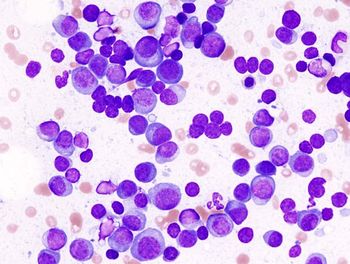
DCE-MRI Successfully Predicts Axillary Lymph Node Metastasis, DFS in Early-Stage Breast Cancer
Investigators suggested that the results of this study may assist health care providers in personalized therapeutic regimen selections for patients with early-stage breast cancer.
An evaluation of the machine learning capabilities of dynamic contrast–enhanced (DCE) MRI (DCE-MRI) in patients with breast cancer demonstrated that novel individualized clinical decision nomograms could be used to predict axillary lymph node metastasis (ALNM) status and disease-free survival (DFS).
Decisions associated with patient-specific selection of surgical interventions and systemic therapies in those with early breast cancer were aided by the use of the nomograms. The study investigators suggested that the results of this study, published in JAMA Network Open, may assist health care providers in targeting personalized therapeutic regimen selections for this patient population.
“The clinical-radiomic nomogram successfully stratified [patients with] early-stage breast cancer according to their risk of ALNM,” wrote the study authors who were led by Yunfang Yu, MD. “This technique displayed a greater net benefit and was able to reduce the number of unnecessary [axillary lymph node dissections; ALNDs] compared with use of radiologists’ diagnosis to select patients for sentinel lymph node biopsy at all threshold probabilities.”
In this retrospective prognostic study, investigators randomly divided patients with histologically confirmed early-stage breast cancer diagnosed at 4 hospitals in China by a 7:3 fashion into development and validation cohorts. Of note, all those included in the study underwent preoperative MRI scans, were treated with surgery and sentinel lymph node biopsy or ALN dissection, and were pathologically examined to determine the ALNM status.
Overall, 1214 women were included in the study and spit into development (n = 849; 69.9%) and validation (n = 365; 30.1%) cohorts.
In the development and validation cohorts, the radiomic signature recognized ALNM with areas under the curve (AUCs) of 0.88 and 0.85, respectively. Conversely, the clinical-radiomic nomogram was able to accurately predict ALNM in the corresponding cohorts (AUC, 0.92 and 0.90, respectively) by least absolute shrinkage and selection operator (LASSO)–logistic regression model.
Moreover, the radiomic signature predicted 3-year DFS in the development cohort with an AUC of .81 versus the validation cohort with an AUC of 0.73, while the clinical-radiomic nomogram predicted 3-year DFS in the development and validation cohorts with AUCs of 0.89 and 0.90, respectively.
Importantly, the clinical-radiomic nomogram could also discriminate high-risk from low-risk patients in the development cohort (HR, 0.04; 95% CI, 0.01-0.11; P < .001) and the validation cohort (HR, 0.04; 95% CI, 0.004-0.32; P < .001) based on a random forest–Cox regression model.
“The patients stratified by the combined radiomic and clinical signature were classified into low-risk and high-risk groups for DFS in advance, which greatly improved the ability to predict the risk of DFS,” the authors wrote. “This strategy may have clinical implications for individualized follow-up and for guiding therapeutic strategies.”
Ultimately, a decision curve analysis revealed that the clinical-radiomic nomogram exhibited better clinical predictive usefulness than either strategy alone. However, these results will require further calibration and validation in a high-quality prospective study. In addition, the investigators recommended that future studies focus on comparing predictive values from different imaging approaches, such as MRI and ultrasonography, using artificial intelligence technology.
“In current clinical practice, multigene-based expression assays, such as the 70-gene expression profile and the 21-gene recurrence score, are currently being used to predict the likelihood of recurrence in patient subsets who have had hormone receptor–positive, ERBB2-negative early-stage breast tumors,” the authors wrote. “It is suggested that the combination of radiomics and genomics might better guide clinical decision-making.”
Reference:
Yu Y, Tan Y, Xie C, et al. Development and validation of a preoperative magnetic resonance imaging radiomics–based signature to predict axillary lymph node metastasis and disease-free survival in patients with early-stage breast cancer. JAMA Netw Open. 2020;3(12):e2028086. doi:10.1001/jamanetworkopen.2020.28086
Newsletter
Stay up to date on recent advances in the multidisciplinary approach to cancer.

















































































